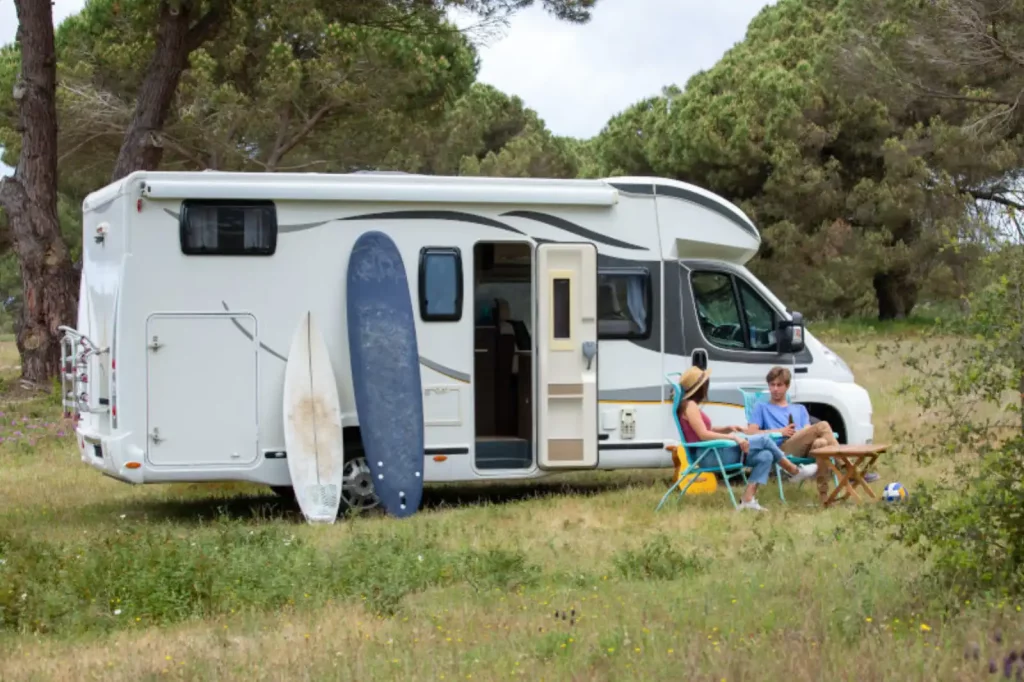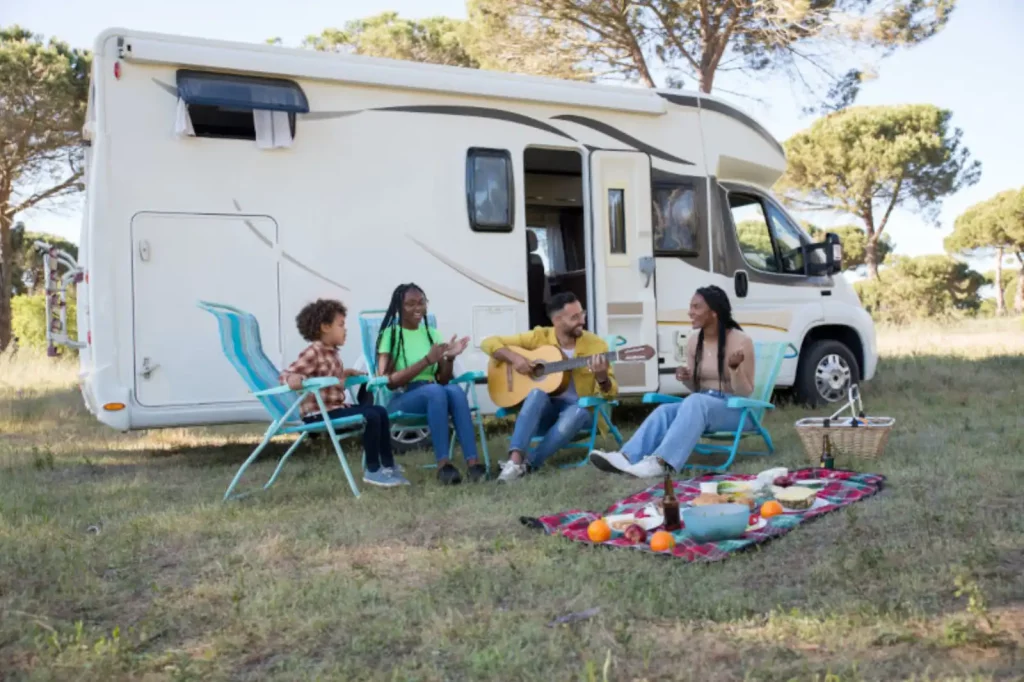How to Ensure Safety on Your Next Road Trip

There’s no more exhilarating feeling of freedom than the all-American RV road trip. You’ll leave the daily nine-to-five grind behind and cruise down the highway en route to endless adventure.
But like any comfort barrier-breaking escapade, travel entails a degree of risk. Thoughtful preparation is essential to protect yourself against unforeseen misadventures.
From vehicle maintenance to road safety, RV preparation, and adverse weather, here’s how to stay safe on your next road trip.
Service Your Vehicle Before You Leave
Although you’ll find a mechanic in any sizeable American town, it’s best to get your maintenance sorted before you depart. Booked-out workshops, hard-to-find parts, and substandard workmanship make servicing mid-road trip a headache.

And then you’ve got the risk of outright rip-offs. Some dishonest mechanics charge travelers a fortune as they know they won’t return anyway.
Save yourself a lot of hassle by getting your tried-and-tested hometown mechanic to go over your vehicle with a fine-tooth comb. Start by getting your oil and filters changed if they’re due. Next, ask your mechanic to do all the requisite safety checks: tires, lights, brakes, steering alignment, fluid levels/leaks, and the windshield.
Towing a trailer?
You must ensure your RV doesn’t become a perilous wobble-box at high speed. Get a qualified professional to check your towing capacity, trailer weight, weight distribution, braking system, and brake/parking lights.
Prepping Your RV for a Road Trip
While most road trips go off without a hitch, things can go wrong. Prior preparation could transform a disaster into an inconvenience.
Put together an emergency kit with all your first aid essentials. Throw in a fire extinguisher, emergency blanket, non-perishable food, a portable water filter (or aqua tabs), and a five-gallon bottle of fresh potable water.

The most likely mechanical mishap is a flat tire. Ensure your spare is roadworthy and pumped up to the correct PSI. Next, check you’ve got a jack, tire iron, air compressor, reflective vest, slime sealant, a triangular road reflector, and wheel chocks. If you haven’t already, familiarize yourself with the process of a roadside tire exchange.
Even if you’re not super handy, a well-stocked toolkit lets you make basic impromptu repairs. Stock your box with screwdrivers, spanners, a hammer, butyl/Eternabond/electrical tape, an ice scraper, a collapsible shovel, and other assorted odds and ends.
Spare fuses are a godsend for ad-hoc electrical repairs, while jumper cables (or a jump start box) can remedy the dreaded flat battery. Stash a few high-powered flashlights or head torches in your rig, and grab a backup phone charger should your electrical system fail.
Download offline maps to your phone for off-grid exploration (type “Ok Maps” into the search bar on Google Maps). Finally, pack something to protect yourself should the unthinkable arise: pepper spray, a stun gun, a safety horn, or a keychain whistle alarm.
Check the Weather
Adverse weather conditions create a massive risk on our roads.
Keep an eye on the forecast and avoid long drives during torrential downpours. Adding flexibility to your itinerary helps keep you safe from Mother Nature’s wrath.
Consider investing in a heavy-duty storm cover to protect your rig against a catastrophic hailstorm.
Avoid snow and ice-prone areas if you’re not equipped—or experienced—to tackle a slippery tarmac. Cat litter can help you regain traction if you get stuck in the snow, while an ice scraper returns visibility to your windshield.
Likewise, it’s smart to circumvent scorching hot deserts during the sizzling summer months, even if you think your radiator and AC are up to the task.
Get Some Rest
Drowsy driving is a major contributor to our national road toll. Exhausted road trippers suffer from poor attention spans, slow response times, and reduced decision-making abilities.
According to the Centers for Disease Control and Prevention (CDC), a driver awake for 18 hours is just as dangerous as one with a blood alcohol content (BAC) of 0.05%. Hop behind the wheel after 24 sleepless hours, and the equivalent BAC jumps to 0.10%—you’re essentially driving under the influence.
The time you’ve been awake isn’t the only factor. Quality of sleep and driver fatigue also lead to drowsiness on the road.
Start developing suitable sleeping patterns before you depart, and get plenty of shut-eye before a long driving day. If you start noticing the tell-tale signs—frequent yawning, poor memory, missed exits, lane drifting—then pull over ASAP and take a much-needed nap.
The Federal-Aid Highway Act of 1956 aims to ensure a rest area, either state or commercially-run, is available approximately every half hour of driving. Using these convenient pullovers could save you from getting into one of the 83,000 drowsy driver-related accidents each year.
You’re up to speed on the essential safety info. Now, enjoy your adventurous mobile lifestyle! And be sure to share your adventure with the RecNation community!
